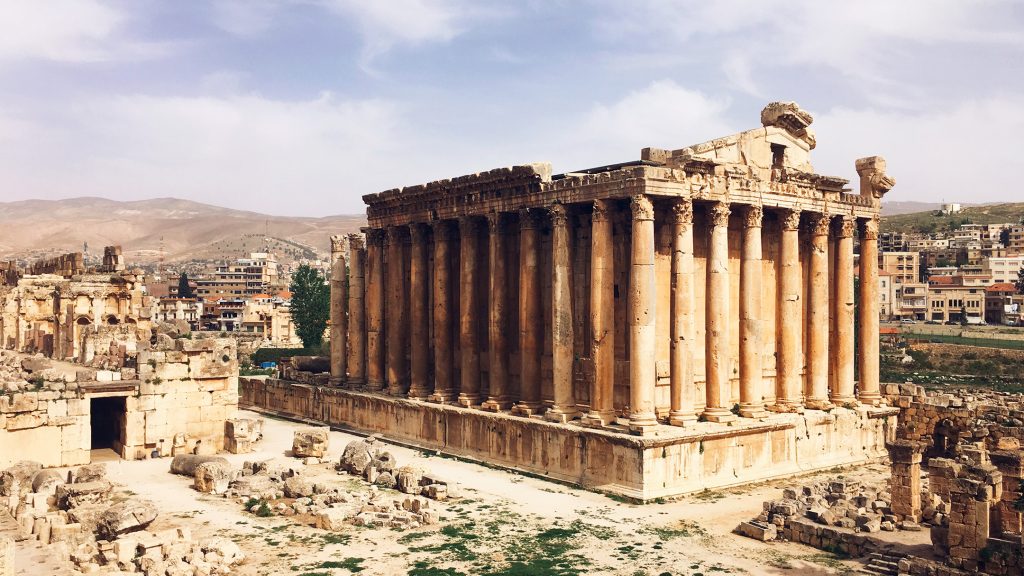The road to Baalbek can be long, bumpy, and uninspiring, especially along the stretch connecting Chtaura to the City of the sun. However as is often said, it is the journey and not the destination that counts. Below is one suggested itinerary to explore Baalbek as a part of a roadtrip, and discover the surroundings of this district in all its beauty.
The trip begins by traveling up north towards the district of Batroun, where two roads lead to Bcharreh, coming from either side of the Qadisha Valley. In Bcharreh, you can visit the Gibran museum, spend some time under the tall trees of the Arz forest, and have a bite at one of the restaurants overlooking the valley.
The last stop before Baalbek is Dar el Ahmar, vanishing behind as the plain comes into view. The colours now shift; lines of sight extend horizontally in layers of yellow and brown under the infinite sky. Quickly, the city advances on the plain; suddenly, after a few turns, you are in the middle of Baalbek, where the sun setting behind the Temple of Jupiter reminds you of the reason for your trip.
You’ve earned your right to relax and unwind in the Annexe’s jewel of a courtyard. Tomorrow, Baalbek, Niha and Rayak await.
—
Wondering where to stay in Baalbek? Take a look at L’Annexe, our Family Member in the City of the sun.
—
Start your second day early with a delicious breakfast of fresh saj and cherry jam, and enter the Baalbek site as it is still waking up. Next on the itinerary are two choices, the temples of Niha, or the industrial ruins of Rayak.
After lunch, you can chose to extend the trip by continuing down south for a walk in Taanayel, visiting the convent’s grounds, or a short hike in the Ammiq swamps, if your energy still allows.
To return to Beirut, depending on your last stop, you can either continue through Chtaura back along the main highway to Baabda, or drive south towards Kefraya, and back up across the mountains of the Chouf, although the latter might be better kept for a different trip, and another day.
Arriving by nightfall to Beirut you will probably be tired, but certainly inspired by the incredible variety of the Lebanese landscape, and how much of it can be experienced in two days.

